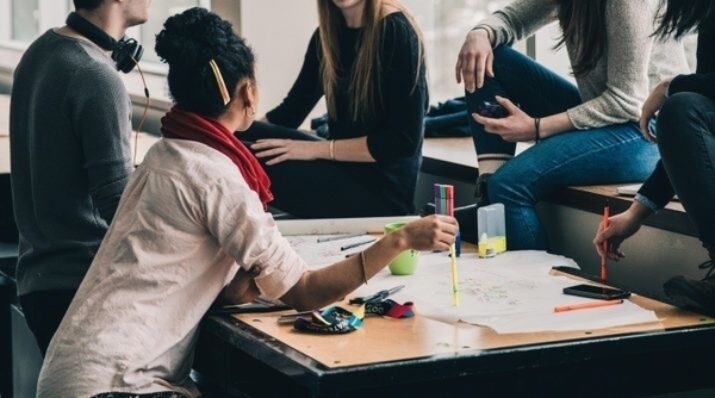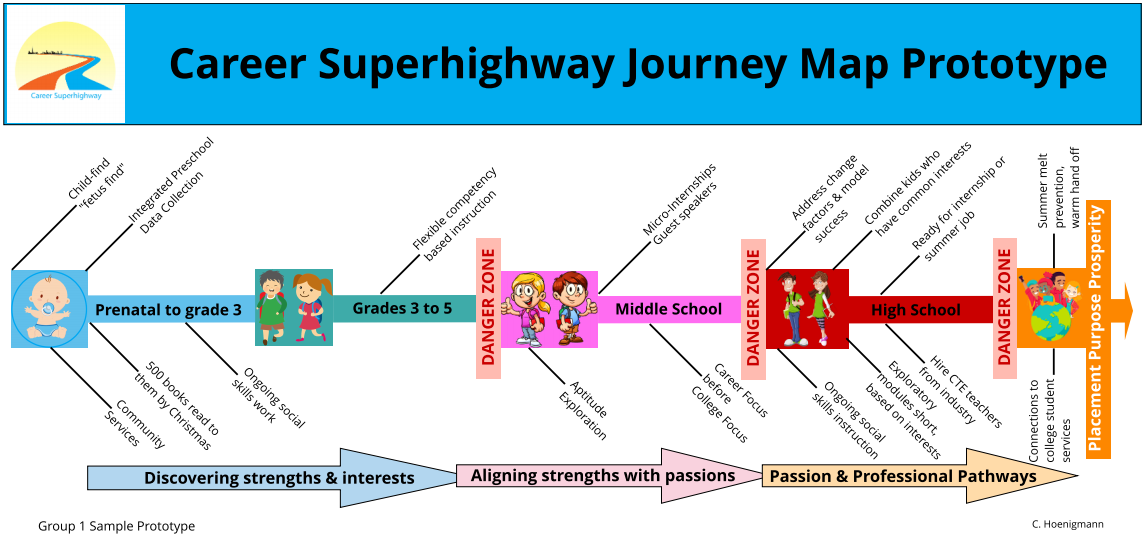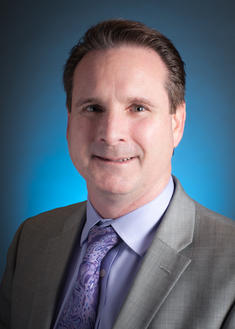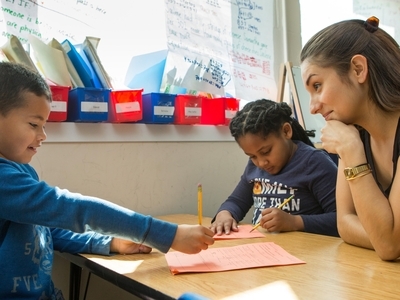Career Superhighway Journey Map
Topics

Next generation learning is all about everyone in the system—from students through teachers to policymakers—taking charge of their own learning, development, and work. That doesn’t happen by forcing change through mandates and compliance. It happens by creating the environment and the equity of opportunity for everyone in the system to do their best possible work.
Vista Unified School District students, parents, teachers, and business leaders helped map a career development pathway from prenatal through career for the community.
Setting an effective vision for the future is a tricky business. It has to start with a kernel of an idea, but allow sufficient space for the community to develop it into an organic representation of the desired future state. The purpose of this blog post is to provide a status update on the progress of the International Center for Educational Research and Practice (iCERP), housed at Vista Unified school district (Calif.), to build the structure for a Career Superhighway.
The design process actively engaged the entire community so that the vision and design of the project represents the aspirations and interests of the people who will be involved in operationalizing the vision: students, teachers, community leaders, business leaders, etc. While the process took more than six months to complete, it can be summarized in three steps: 1. Level-Setting, 2. Design and Improve, 3. Season the Ideas. This is the final post in the series, focusing on step 3.
 In the previous four posts "Creating a Career Superhighway," "Setting the Vision for Creating a Career Superhighway," "Using Design Thinking to Set the Vision for a Career Superhighway," and "Using Community Ideas to Shape the Vision for a Career Superhighway," I have chronicled the process we are using in Vista Unified to engage the entire community in the design of a new approach to career pathways—one that places the students and business leaders at the center of the conversation in order to ensure that the learning pathway is relevant to the real world.
In the previous four posts "Creating a Career Superhighway," "Setting the Vision for Creating a Career Superhighway," "Using Design Thinking to Set the Vision for a Career Superhighway," and "Using Community Ideas to Shape the Vision for a Career Superhighway," I have chronicled the process we are using in Vista Unified to engage the entire community in the design of a new approach to career pathways—one that places the students and business leaders at the center of the conversation in order to ensure that the learning pathway is relevant to the real world.
During the first step, we met for more than four hours researching the current disruptions in the world of work. We then transported our thinking into the future to get a glimpse of where things are headed with regard to the requisite skills and dispositions students need to be viable candidates for an increasingly complex and fast-paced global workplace. We then kicked off step 2 using the design-thinking framework to really get to know the hopes and aspirations of students and employers, framed in the context of how to best approach a redesign of career pathways for all students. These empathy sessions resulted in a rich set of recommendations that placed a laser focus on starting career development at earlier ages and setting the conditions for students to experience the world of work more often. We then moved the design focus from empathy to the ideation phase where more than thirty community members developed three hundred ideas in response to the guiding question: How might we set a career development pathway for students that aligns to the demands of a global marketplace? This phase culminated with the group coalescing around the importance of reimagining school to leverage students' strengths, interests, and values; fully connect learning to real world experiences; and personalize school to the individual as a unique learner.
This blog post takes us to the end of the design thinking process where we engaged the group in a robust prototyping workout that led to a set of very innovative journey maps.
A Career Superhighway is a metaphor for creating an uninterrupted career development pathway for students to discover their strengths and interests and transform these into talent capital that aligns to the demands of the global marketplace.
Step 3: Season the Ideas
Status: Prototyping Phase
Our final visioning session was the most enjoyable for everyone because we were able to pull all of the ideas generated in the previous five meetings together. We used those ideas to build a set of prototypes that operationalize our vision to create a career development pathway for students that aligns to the demands of a global marketplace.
Developing the vision and the system for creating a Career Superhighway took over six months because our aim was to genuinely address the problem and authentically engage the community. This approach served to season the ideas along the way.
While I was studying violin at San Diego State University, a professor once told me that the 'white space' between the notes is often more important than the notes themselves. As a young musician, I was too caught up in writing and performing music to realize that the quality of the music comes more from patience and thoughtfulness than speed and accuracy. I have since benefited from this simple lesson time and time again. Similar to quality music, the best designs for education transformation come from slow, deliberate efforts to review, revise, and season ideas, visions, and action steps, making sure they stand the test of time and feel fresh and relevant to all who engage in the project. To this end, the iCERP team deliberately set out a very long development process for the Career Superhighway project in order to allow for ample amounts of time between monthly collaboration sessions so that design ideas could rest in the air and float over our collective thoughts, patiently waiting for refinements and additions.
Building on the lessons from my days in college, I also learned about the power of time to enhance ideas from Tim Hurson's book Think Better: An Innovator's Guide to Productive Thinking. In his book, Tim discusses the concept of "third, third thinking." This approach has similarities to the design thinking process in that it promotes the generation of many, many ideas. Third, third thinking takes it a step further and proposes that people need to move beyond idea exhaustion before they arrive at truly unique and innovative ideas and solutions. The first brainstorming session develops a set of ideas, often constrained by the current system. The team then steps away from the project for some time. During the second brainstorming session, team members begin to move away from traditional solutions and generate some novel ideas. The third time around, the team has generally exhausted conventional ideas and solutions and starts to think about ideas and solutions that break traditional norms and structures.
It is third, third thinking that we were after with regard to generating ideas and solutions to design a Career Superhighway. Looking back on the project, this "Think Better" approach really helped our collective efforts to set a vision, develop a host of ideas, and, ultimately, design a set of promising journey maps that will lead us down the Career Superhighway.
Mapping Our Journey
Leveraging 300 ideas generated in the previous session, Eric Chagala and Nicole Allard, co-leaders of the Career Superhighway project, masterfully set the conditions for some fun during our final session. Nicole and Eric broke the group up into six smaller design teams that were charged with using all of the previously developed material—including empathy interview feedback and a truckload of ideas—to build a prototype for the implementation of the Career Superhighway vision: create an uninterrupted career development pathway for students to discover their strengths and interests and transform these into talent capital that aligns to the demands of the global marketplace.
Nicole, the brilliant strategist she is, craftily ensured that each team included an even distribution of students, parents, teachers, and business leaders. As a result, the competitive juices starting flowing early-on and continued to crescendo all of the way to the end of the session when each team presented their journey map. Eric used his design thinking acumen to engage the teams in a friendly competition to design a journey map. This activity is predicated on the power that planning a journey serves to solidify thinking about how to fit ideas together to facilitate a seamless process, or journey, that leads to a desired destination.
When you think about it, this final activity was the most logical complement to setting our collective vision for a career superhighway. A students' education is like a journey that should, if planned correctly, lead to the fulfillment of their interests and aspirations in a career they are prepared to embrace with enthusiasm and energy. During this activity, Eric and Nicole used an interesting type of values matrix intended to focus the thinking around the type of activities to include in the journey map and the level each activity has on supporting students' career development pathway.
The actual prototype journey maps that each team developed were fantastic, each outlining a career superhighway journey that started with our youngest learners in preschool and culminated with a warm hand-off to the world of work. One very powerful takeaway from the journey map prototypes was that many of them included warning signs to look out for, similar to the warning signs we see on our highways to alert the drivers to avoid possible dangers ahead on the journey. Check out all of the prototype journey maps here to see the result of our collective thinking.

We will next focus on the design of the Graduate Profile to include Wayfinding... the ability to navigate the Career Superhighway.
iCERP and the Career Superhighway of the Future
At iCERP, we consider ourselves explorers in shaping this new world. In partnership with UC San Diego, the San Diego Workforce Partnership, and the Next Generation Learning Challenges, iCERP is embarking on a journey to build the career superhighway of the future. It is a daunting task and represents one of the largest change management initiatives undertaken by education. The iCERP advisory board includes Sandra Brown of UC San Diego, Jason Spencer and Kristen Brown of the California Department of Education, Carrie D'Ascoli of Google, Robert Westfall of Solatube, Phil Blair of Manpower Global, Erin Gavin of Qualcomm, Karen Cator of Digital Promise, and Jack Kahn of Palomar Community College. Together we are working with our community to define this new ecosystem of talent. I look forward to keeping you posted on our progress.





